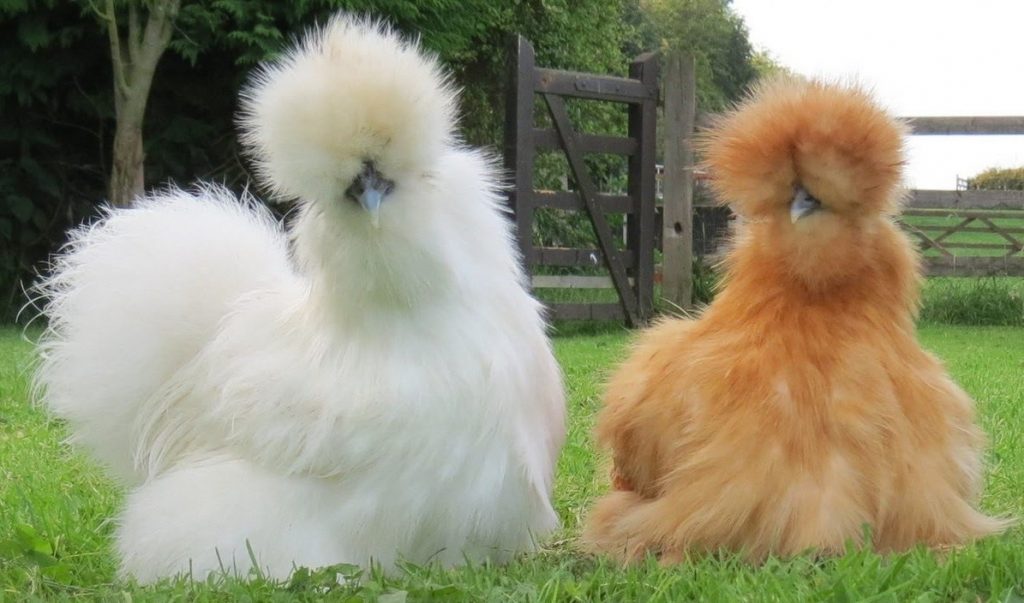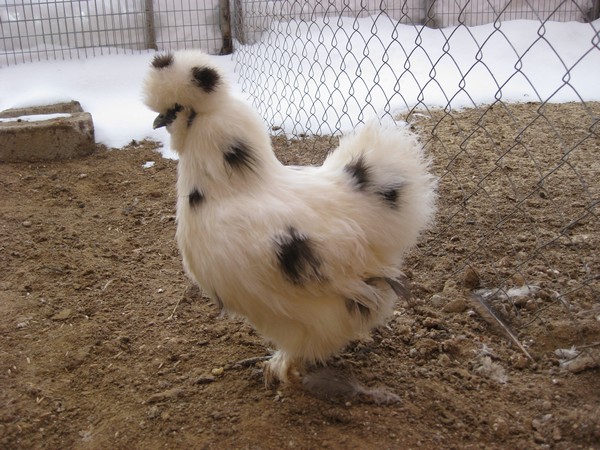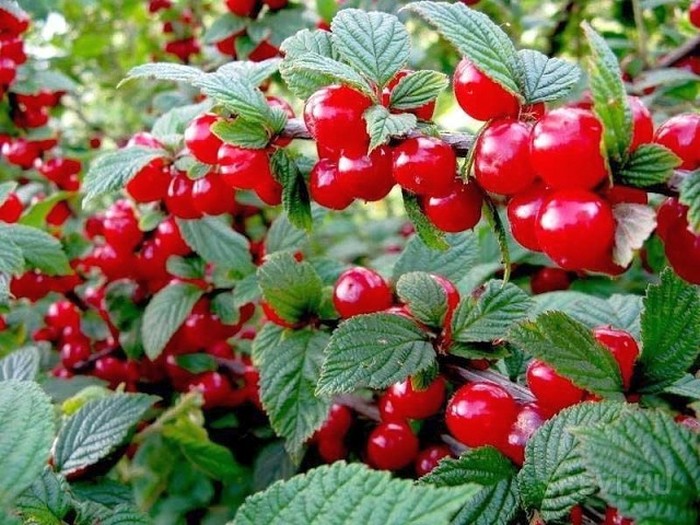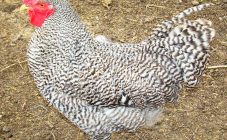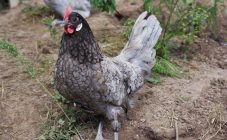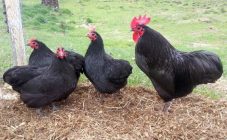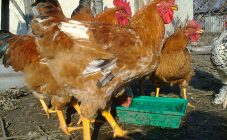Content:
Chinese silk chicken first appeared around 1000 years ago in the countries of East Asia. In the notes of Marco Polo, who traveled in the 13th century in China and Mongolia, you can find references to these fluffy poultry, which were bred by the then aborigines. Chinese chicken was brought to Russia in the 18th century and immediately gained considerable popularity among the peasants due to its beauty. According to legend, this breed was obtained by crossing an ordinary chicken and a rabbit.
Characteristics of the breed
Silk chickens have black bones, blue skin with a brownish tint and dark gray muscles. The Chinese silk chicken has five toes on its feet, each of which is separated from the other and has plumage. On the head of fluffy chickens there are cisterns, a beard and a noticeable crest.
When describing the Chinese silk chicken breed, in most cases, considerable emphasis is placed on their unique plumage, reminiscent of the fur cover of fur animals. The feathers of which it consists are of great length and volume, due to which a similar effect is achieved. The colors prevailing in females' plumage are black, white, bluish and yellowish.
Fertility
The average weight of an adult snare chicken (as poultry farmers sometimes call them) is 1 kg, plus or minus 2 grams. This can hardly be called large. In connection with this factor, the level of productivity in this breed of chickens is not too high. Each year, a Chinese chicken lays only about 110 eggs, each of which weighs an average of 35 g and has a light brown shell.
Bird care
The Chinese crested chicken is characterized by extremely low demands on the conditions of detention. Caring for a Chinese silk chicken is almost the same as keeping a regular chicken. Here are the basic rules to follow when raising silk chickens:
- Maintain the temperature regime in the chicken coop at the proper level.
- Regularly clean up the place where the chickens are kept, monitor compliance with sanitary and hygienic standards.
- Protect chickens from predators hunting poultry. For these purposes, you can create a special enclosure enclosed with a net for walking them in the yard.
- Be attentive to the observance of the correct diet. Try to feed both chicks and adult chickens with only high-quality food.
Chicken coop temperature
In the winter season, to preserve eggs and protect chickens from exposure to cold temperatures, the hen house must be heated. During the very first days after the birth of chickens, a 30-degree temperature should be maintained in the chicken coop, after each past week, it should be reduced strictly by 3 degrees.
Power features
The next thing to take care of is the correct feeding regimen.At first, feed the chicks every 120 minutes. This interval should be gradually increased by 10 minutes, switching to 4 meals a day by the month.
What should be included in the diet of silky chickens:
- semolina, millet or corn grits;
- boiled carrots;
- purchased vitamin mixtures;
- all kinds of fermented milk products;
- meat broths;
- fish fat;
- chicken yolks;
- eggshell.
Breeding Chinese crested
Since Chinese silk chickens cannot move through the air, they do not need roosts. This greatly facilitates the work of raising these birds. Otherwise, their breeding is not too different from breeding domestic chickens of all other breeds.
Crested Crested eggs can be purchased in the store and raised in an incubator, or you can buy an already adult bird that lays eggs. Both methods have their own advantages and disadvantages, so only the farmer himself decides which one to give preference to in order to achieve his goals as efficiently as possible.
Diseases of silk chickens
Diseases overtake Chinese chickens not so often due to their high level of adaptability. Any malaise is almost always the result of poor bird care. A diseased chicken should be immediately isolated from healthy individuals. What diseases are crested chickens susceptible to?
- Inflammation lungs... Symptoms: fever, poor coordination, hoarse breathing. Antibiotics are commonly used for treatment.
- Worms... Symptoms: exhaustion, lethargy, loss of appetite. An anthelmintic drug is used as a treatment.
- Rickets... Symptoms: impaired coordination, growth retardation, abnormally growing bones. For prevention purposes, it is necessary to enrich the chicken diet with calcium with vitamin D3.
- Peritonitis... Symptoms (acute): fever, worsening of stool, pain in the abdomen, detected with light pressure. Treatment is carried out with sulfathiosol, 10 mg is taken per 1 kg of food. Symptoms (chronic): saggy belly. Treatment of chronic peritonitis does not make sense; in this case, the bird is simply taken to slaughter.
- Coccidiosis... Symptoms: drooping wings, lethargy, lack of coordination. It is necessary to treat the disease with furagin mixed with food or water. Fish oil also helps a lot.
Breed advantages and disadvantages
Despite their amazing appearance, snare chickens are valued not only for them. The value also lies in their meat - chicken that tastes very pleasant, having considerable useful properties. Chinese silk chicken meat is a delicacy.
The fluff of a Chinese silky chicken in its characteristics may well compete with sheep's wool. Due to the rapid growth of the feather cover, this breed of chicken can be sheared every month. As a result of two haircuts, it is usually possible to collect somewhere around 150 g of fluff.
Another plus is the docile nature of fluffy chickens, because of which their haircut is not overshadowed by additional difficulties. They usually do not shy away from the hands of the owner, they do not strive to take off.
Chinese downy chickens, despite their origin and name, can grow excellently not only in the Asian climate. In central Russia, they are grown with exactly the same success, while they usually do not need to provide any special conditions. Therefore, unpretentiousness can be unequivocally attributed to the advantages of this breed of chickens.
The negative aspects of the breed include low fertility. Another disadvantage is the high price of chickens. One adult bird costs about $ 50, unlike most other breeds, which will cost the farmer much less.
